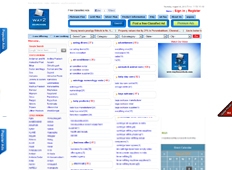A significant percentage of internet users visit the web using various mobile devices such as tablets and smart phones. Unfortunately, most websites are not optimized for such devices. Furthermore, the difference in screen sizes of the devices used to visit the internet make it hard for the websites to suit the mobile devices. All these problems can be solved through responsive website designing.
Responsive Website Designing
Responsive website designing allows websites to responsive to the unique needs of both devices and their users. The designers ensure that the website is optimized for the device capabilities and its appearance changes, depending on the screen size. For example, a tablet would display content in two columns while a smart phone would display it in just one column. Unlike normal web designing, responsive website designing gives users more freedom to manipulate the internet.
Pros and Constraints of Responsive Web Designing
Foremost, the designers should understand the basics and hassles of responsive web designing. The most important aspect is to understand the device capabilities when developing such sites. Similarly, the developers should understand that the users persistently experience changes in the website layout with the emergence of new device queries. Expert designers argue that such problems can be corrected with the help of CSS transition. There are also certain challenges that designers face when developing pages with data tables. For example, they are traditionally large, hence becomes hard to read when zoomed out. Moreover, if you zoom them in to read the content is tedious since the user has to scroll it.
However, this problem can still be avoided in many ways. For example, the designer can transform the table into a graph or pie chart. Either of them would comfortably fit even the small screens. The scaling of images in a responsive web makes them ‘context-related.’ For example, they fit screen with both low and high resolutions. In addition, the upgraded designer tools and coding terms allow the images to appear clear regardless of the screen resolution.
Arguably, responsive website designing is still clearly superior to the traditional methods of developing sites. It allows the designers to remarkably integrate both technical and innovative skills of designing websites. Unlike the traditional methods, responsive web designing are greatly flexible and optimized for all devices used to access the web. For example, they suit all devices with different screen sizes and resolution. This type of designing makes websites user-friendly since it focuses on the users.

















































